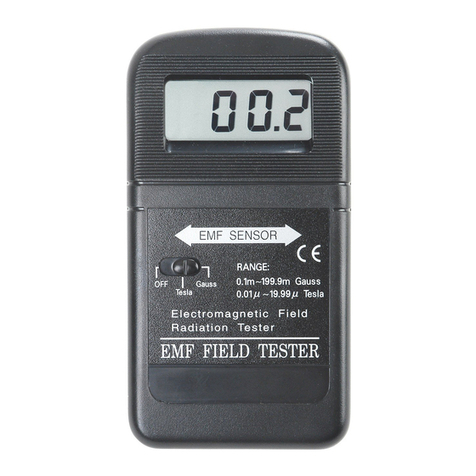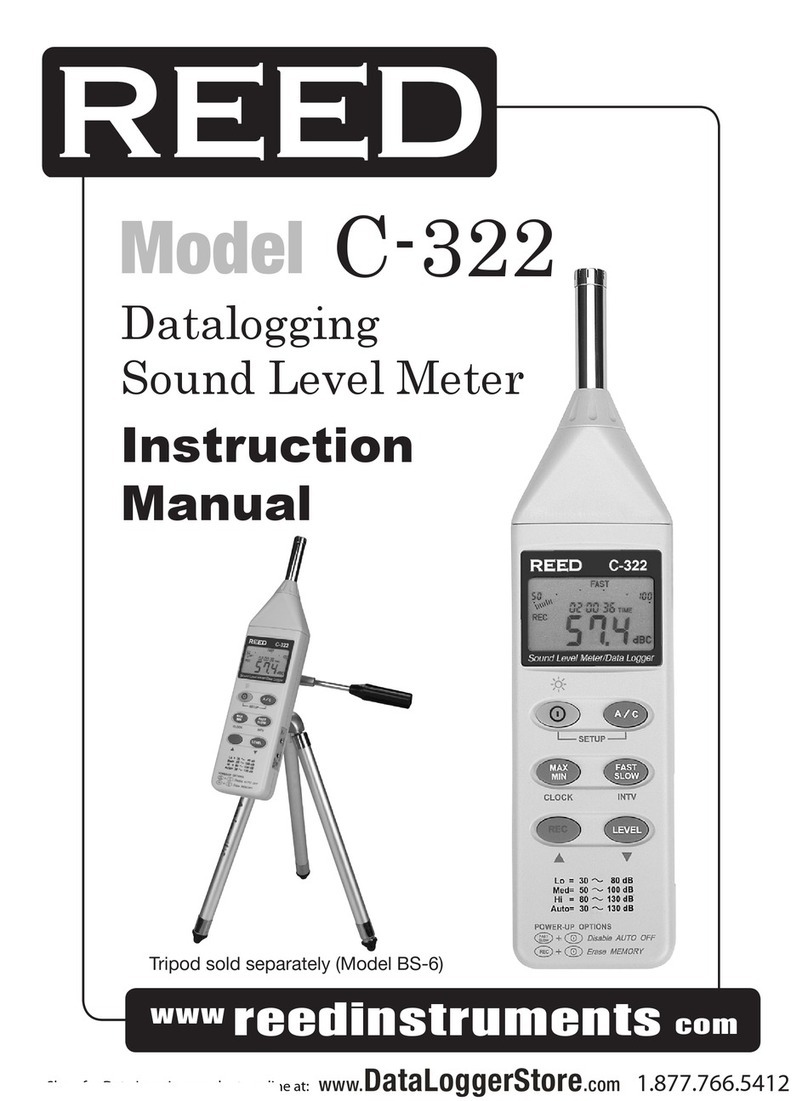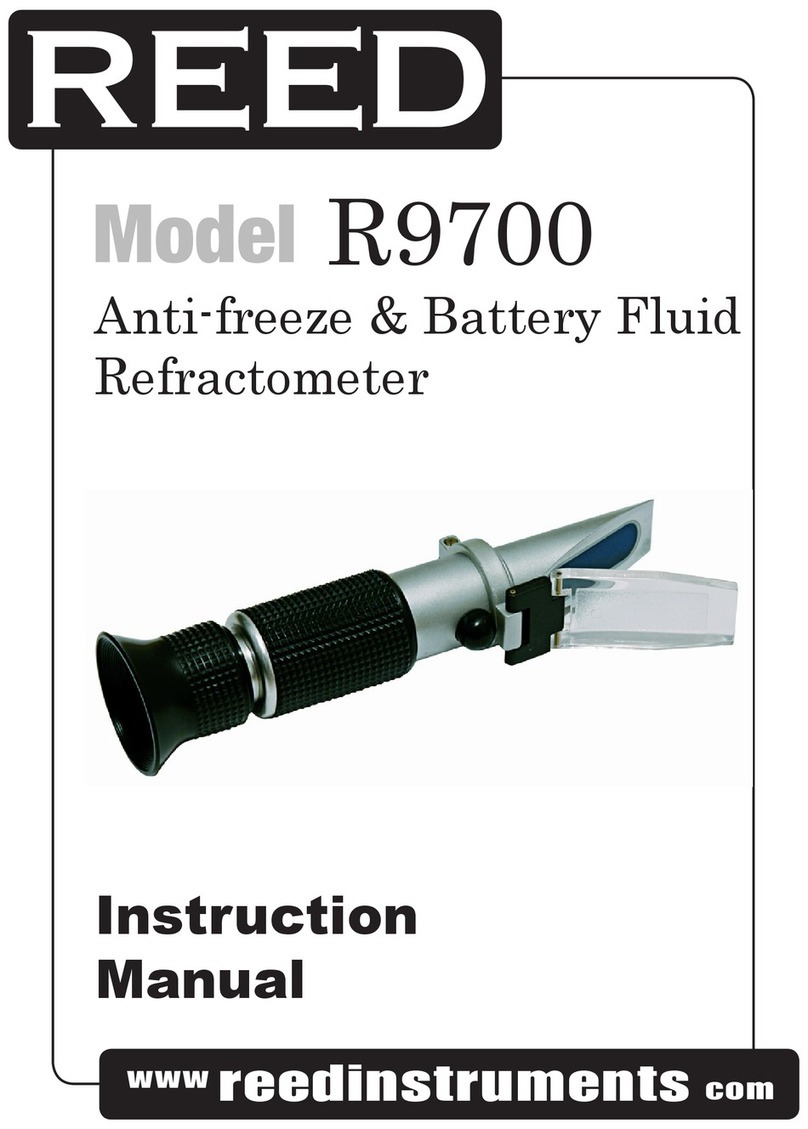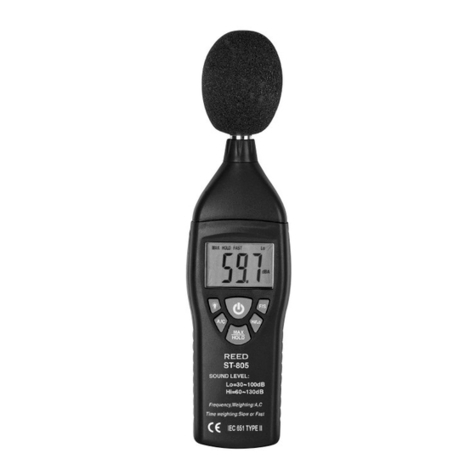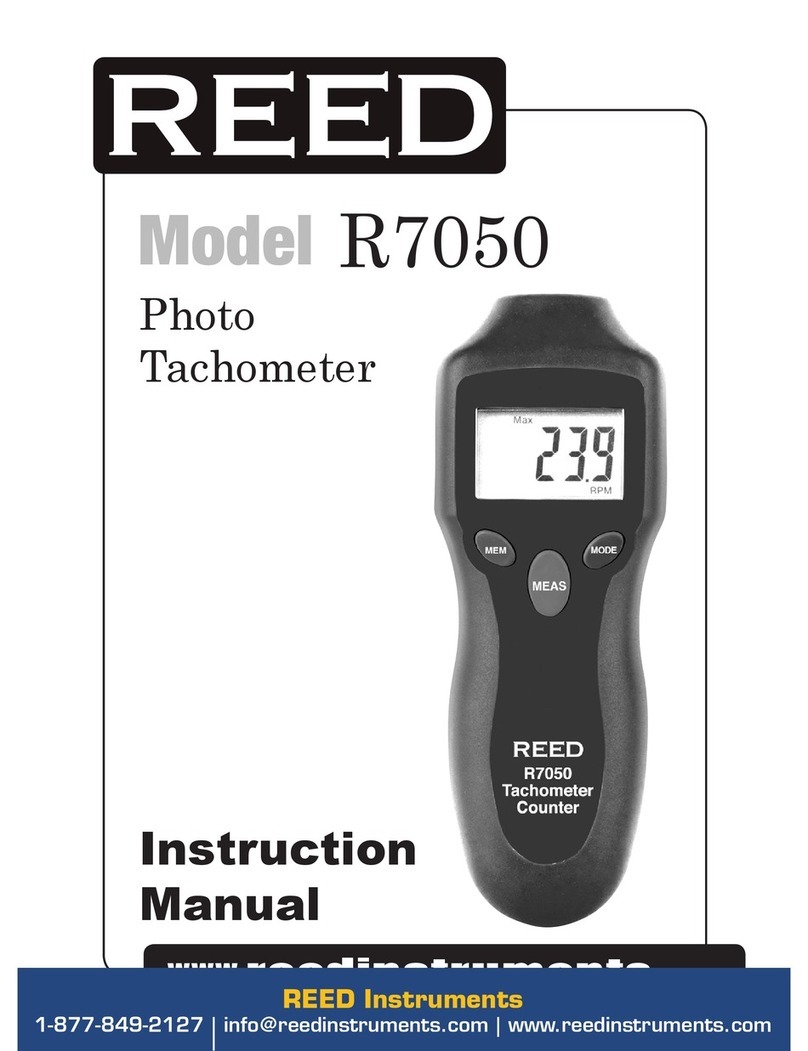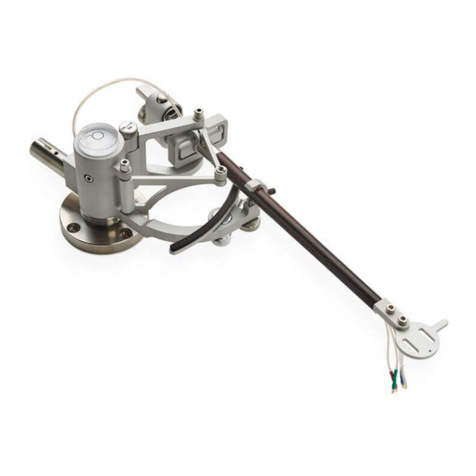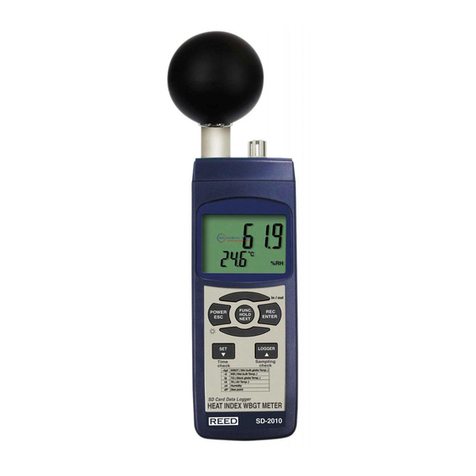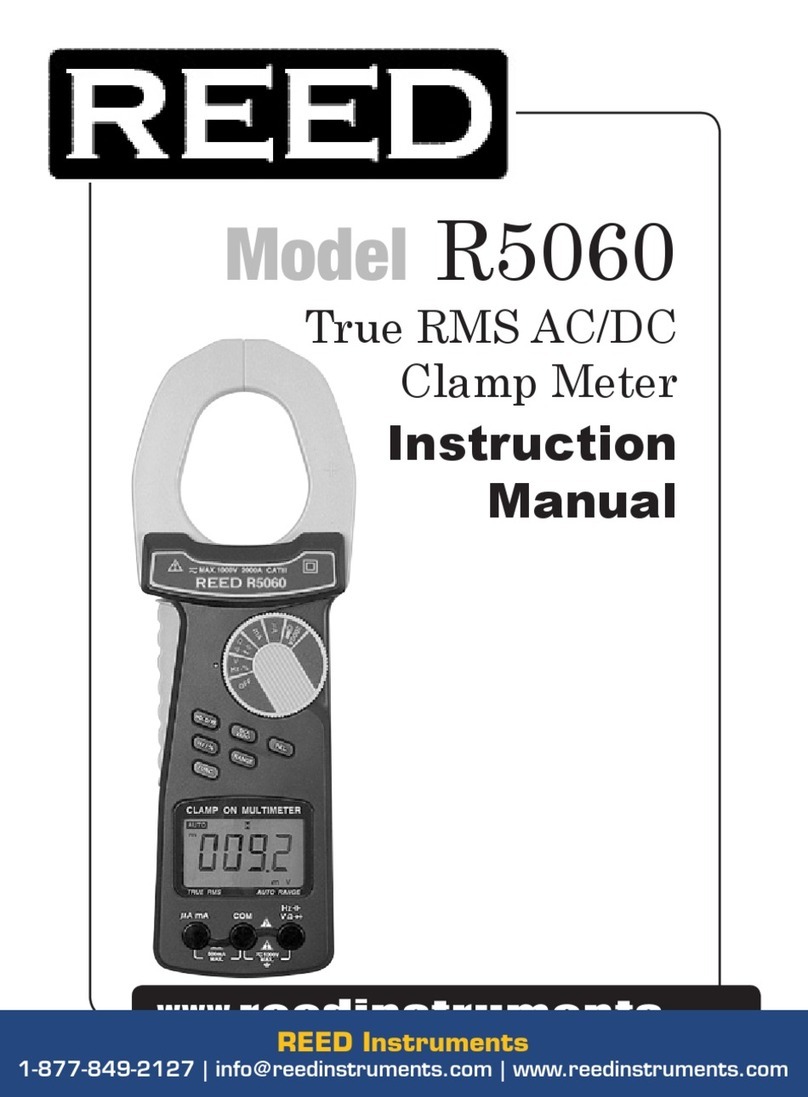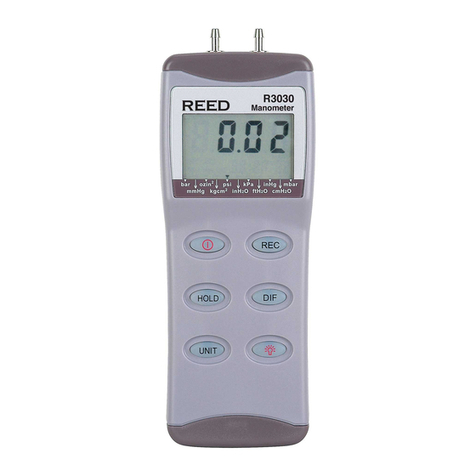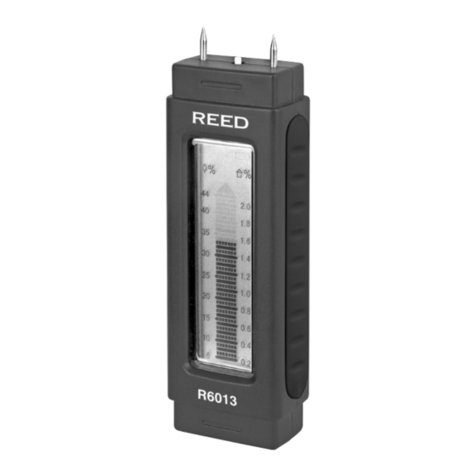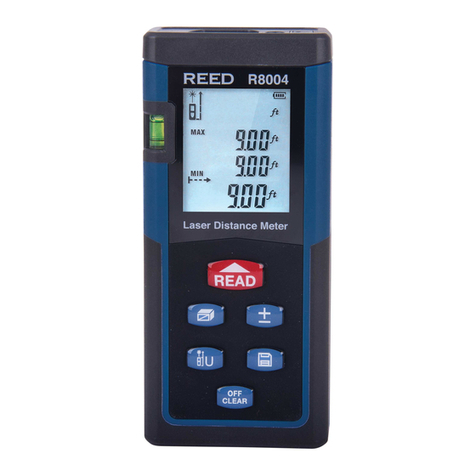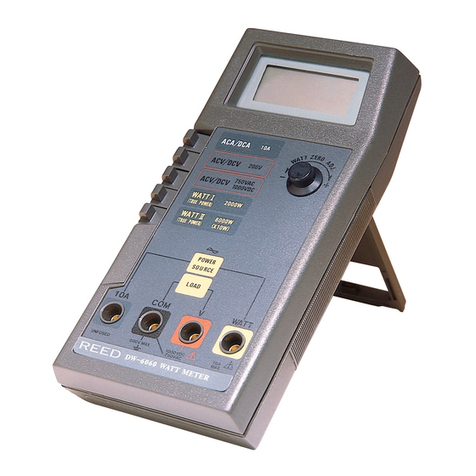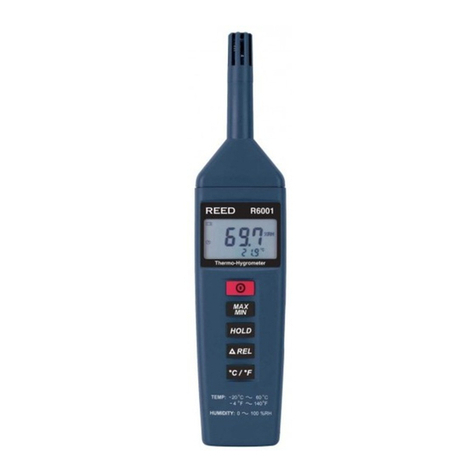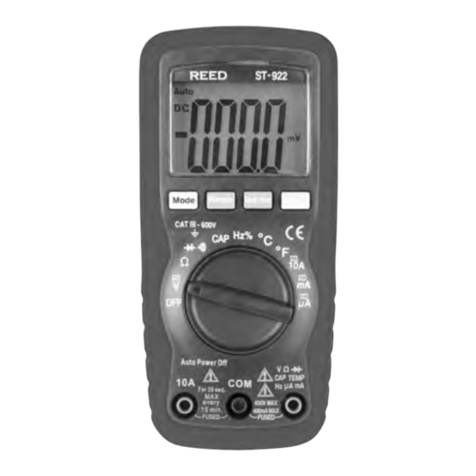reedinstruments
www com
10
µA DC/AC Current Measurements
1. Insert the black test lead into the negative COM terminal and the red
test lead into the positive µA terminal.
2. Set the function switch to the μA position.
3. Select AC or DC with the MODE button.
4. Remove power from the circuit under test, then open up the circuit at
the point where you wish to measure current.
5. Touch the black test probe tip to the negative side of the circuit.
6. Touch the red test probe tip to the positive side of the circuit.
7. Apply power to the circuit.
8. Read the current in the display.
Resistance and Continuity Measurements
1. Insert the black test lead into the negative COM terminal and the red
test lead into the positive terminal.
2. Set the function switch to the position.
3. Use the multifunction MODE button to select resistance.
4. Touch the test probe tips across the circuit or component under test.
It is best to disconnect one side of the device under test so the rest of
the circuit will not interfere with the resistance reading.
5. For Resistance tests, read the resistance on the LCD display.
6. For Continuity tests, if the resistance is < 100Ω, a tone will sound.
Diode Measurements
1. Insert the black test lead banana plug into the negative COM jack and
the red test lead banana plug into the positive diode jack.
2. Turn the rotary switch to the position.
3. Press the MODE button until “ ” appears in the display.
4. Touch the test probes to the diode under test. Forward voltage will
indicate 0.4V to 0.7V. Reverse voltage will indicate “OL”. Shorted
devices will indicate near 0mV and an open device will indicate “OL”
in both polarities.












